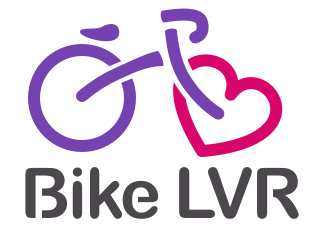Most bikes have similar parts, and this guide provides an overview of the essential and optional bike parts you might find on any bike. We’ll cover why understanding bike anatomy is important, the different types of bikes available, and the breakdown of each bicycle component into easy-to-understand sections.
Table of Contents
Bike Parts Name and Function
Bike parts are a lot like human body parts: they all serve a purpose. The differences in bike parts are there to serve your needs and help you with your ride. Furthermore, familiarity with bike jargon not only makes communication with other cyclists and mechanics simpler but also helps when you need a part fixed.
Bike Frame Parts
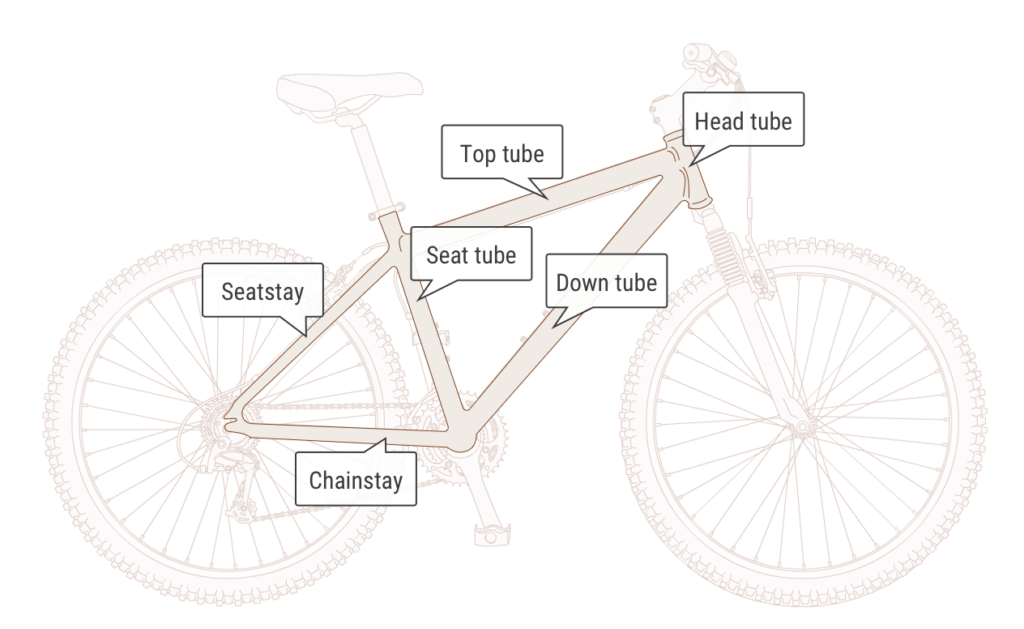
- Top tube – Connects the head to the seat tube. It is essential when choosing the size, the reach of your bike, and how aggressive your riding position is.
- Head tube – Longer head tubes give you a more upright riding position, which some riders prefer for comfort. This can also make it easier for new or less flexible cyclists to get into a comfortable riding position. A longer head tube may also be required if you have long legs and need a higher saddle for proper fit. Shorter head tubes give you a lower, more aerodynamic position, which is beneficial for racing, time trials or other competitive efforts.
- Longer head tubes give you a more upright riding position
- Shorter head tubes give you a lower, more aerodynamic position
- How do I measure my Head Tube? head tube length is the distance from the top of the head tube to the bottom, measured with the fork installed
- Seat Tube – This tube acts as a means for attaching almost all other parts to the frame. This is because the seat stays and seat post are attached through this tube with a simple insertion of the bolt into the end of the tube. The size and shape will change depending on whether you’re riding a road or mountain bike. The length of your seat tube will determine how much room you have for adjustments to your saddle height. A longer seat tube generally means more height for your saddle. This can be useful if you are taller than average, as it allows you to find a position that feels comfortable while still being aerodynamic while pedaling.
- Down tube – The down tube is the tube that runs directly beneath you, from the front fork to the rear frame. A down tube runs from the top tube on a bicycle to the bottom bracket, which is where the cranks attach. This part of the frame supports most of the weight of the bike and transfers that downward force to the chainrings and crankset, which then turns that force into forward motion for you.
- Seatstay – The primary purpose of seat stays is to help transfer braking and pedaling forces into forward motion by keeping the rear wheel centered in its dropouts. When you hit a bump while riding, your rear wheel compresses vertically slightly before rebounding; these forces are transferred through the seat stays and into your frame. Seatstays also provide lateral support for a rear suspension system, if applicable.
- Chainstay – The main purpose of the Chainstays is to support the rear wheel. When you start pedaling forward, this part holds everything in place until you reach top speed. When you brake or steer, these parts transfer that force from one side to another to help keep balance. When we talk about a long-chainstay or short-chainstay configuration, we’re referring to how far forward or backward this bar extends.
- Why a longer Chainstay? Stability, Bike rack, ride comfort, and less bumps
- Why a shorter Chainstay? Agility, traction, and speed
Names of Bike Parts

The bicycle is a simple machine. It’s comprised of three main parts: the frame, the wheels, and the drive system.
The frame is what supports you while riding, and it also houses all the bike’s other parts.
The wheels are your contact points with the ground, so they have to be durable and able to deal with all sorts of terrain.
The drive system consists of the chain, gears, and brakes. This system is responsible for moving you along on your ride—it also has to be durable so it can withstand abuse from everyday use, as well as temperamental weather conditions.
- Handlebars. A single handlebar is connected to another by a tube that allows you to maneuver the front wheel. They are supported by a stem and connect to the front wheel through the fork.
- Chain. The chain is made of metal links that interlock with the gear and chain wheel to put the bike in motion as you pedal.
- Front derailleur. The front derailleur functions to change gears as you ride, using a shifter that is attached to a cable.
- Rear Derailleur is a crucial component of any bike’s drivetrain that helps shift gears on the rear wheel. Its spring-loaded arm moves the chain between different gears on the cassette, allowing for a smooth and efficient riding experience.
- Chainstay. The wheel hub uses a tube called the chainstay to connect to the crank.
- Pedal. You place your feet on the pedal to rotate the chain and put the bike in motion.
- Seat (Saddle). The seat is obviously where you sit. Its size, shape, and padding thickness varies depending on the type and size of the bike. The seat is easily replaced or adjusted on any bike, and most manufacturers offer covers for additional padding if your seat is uncomfortably thin.
- Seat tube, stay, and post. The seat tube is part of the frame that joins the seat post to the pedal and leans toward the rear of the bike. The stay connects the seat tube with the rear wheel, and the post is the part that attaches the seat to the bike.
- Brake. Bike brakes are comprised of a cable, pads, caliper, and return springs. When activated, the pads press against the wheels to stop the bike. The cable transmits the pressure that activates the brakes.
- Down tube. The down tube connects the pedal mechanism to the head tube. This is the longest tube on the bike and is important for your ride height.
- Wheels. The wheels are a complex component of the bike. They have many parts, including the spoke, tire valve, tire, hub, and rim. The hub and rim make up the metal wheel and are connected by the spokes. The tire fits around the frame in the same way that a car tire fits. Tires vary in width, thickness, and tread pattern to accommodate different terrain. The tire valve is the small extension that is used to place air in the tire and trap it there. A bike pump fills the tires.
Optional Bike Parts
Customizing your bike with optional parts can enhance your riding experience. For added safety, you can attach head and rear lights. Bar ends on the handlebars provide an extra resting spot for your hands, improving comfort. An odometer or speedometer is also beneficial, whether you’re tracking your speed or legally monitoring your electric bike’s speed to be under the limits.
If you want storage, you have many options. You can place a carrier on the back that allows you to strap bags or boxes to your bike. A water bottle clip is usually placed on the frame beneath you but within reach. There are attachable bags and baskets that come in various sizes to accommodate different loads. Remember that the size of your bike and tires affects the weight capacity. I love a kickstand.
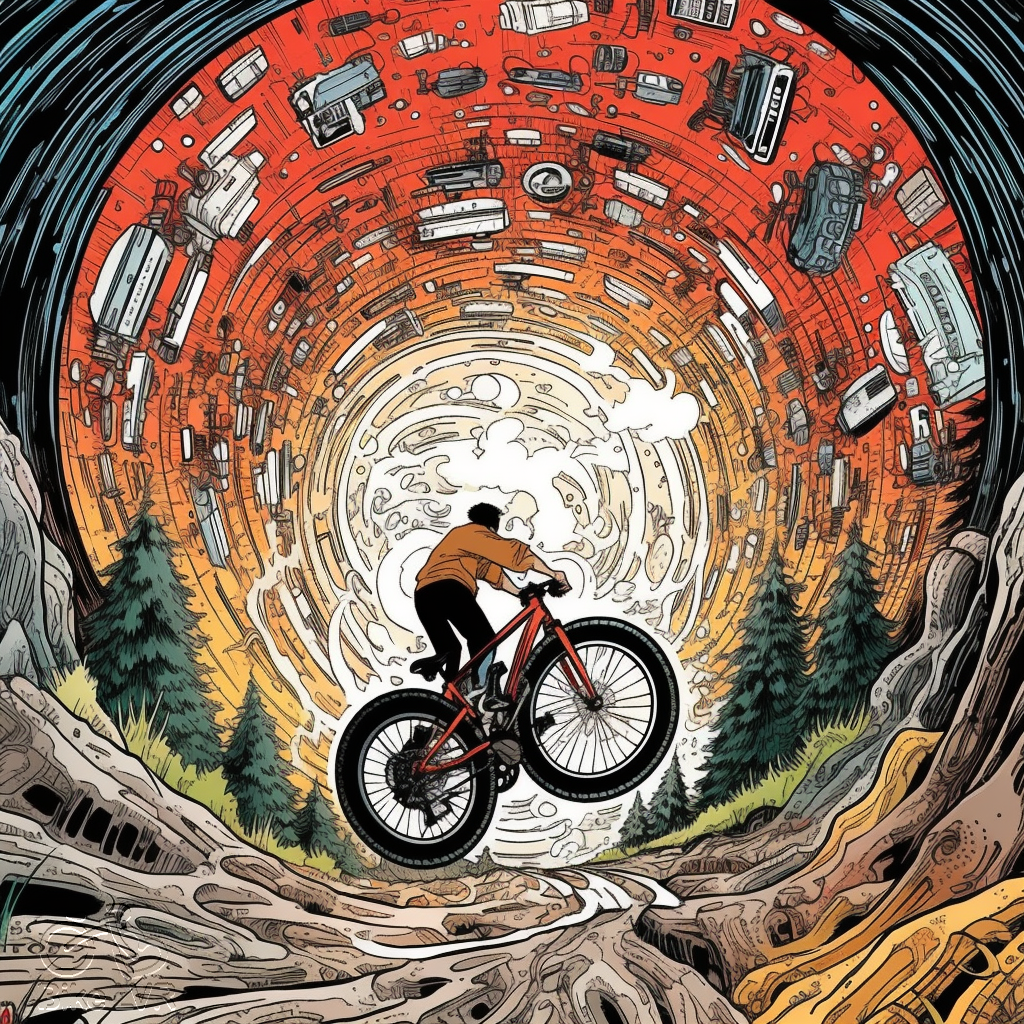
Bike Styles and Sizes
Bikes are designed in many different styles and sizes to accommodate different conditions. Road bikes, mountain bikes, and cruisers can all be used interchangeably, but they each work best for a certain type of terrain.
1) Road Bikes 🚴♂️
Road bikes are lightweight with thin tires. The handlebar is dropped lower than the seat height to position the rider for maximum speed. They work best on smooth pavement and are often used for on-road racing. You can take a road bike on a paved trail, but off-roading can be uncomfortable. Adventure road bikes offer more versatility for off-road riding.
2) Mountain Bikes 🚵♂️
Mountain bikes have straight, upright handlebars and are designed for rough terrain. They typically have front or back gear suspension to absorb shock and make the ride slightly smoother. You can adjust them to use as commuter or touring bikes, but they are significantly heavier than road bikes. Many mountain bikes are sold with fat tires to make them more efficient on rough terrains, such as snow and sand.
3) Hybrid Bikes
If you are looking for something with the capabilities of road bikes and mountain bikes, hybrid bikes were designed to have the advantages of both. The bike seat is padded for casual riding on paved roads and short commuting. They are heavier than a road bike to accommodate unpaved bike trails, but they are not ideal for off-road mountain biking. The tires are semi-smooth to create a grip for bumpy rides but still allow a smooth experience on paved roads. Some even have front suspension to create a more comfortable ride.
4) Cruiser Bikes 🚲
The cruiser bike is designed for the ultimate casual rider. The bike seat is large and well padded for comfort, and the handlebar is upright and significantly higher than the seat. Most of them are single or three-speed and have wide tires for smooth terrain. Most manufacturers make cruiser bikes in many different colors and styles because they make for a fun ride for beginners.
5) Commuter Bikes 🏙️
Commuter bikes, also known as city or urban bikes, are designed specifically for riding in an urban setting. They have characteristics of road, mountain, and cruiser bikes. For example, the wheels are similar in size to a hybrid bike, which is designed for work for road and mountain biking, but the handlebar is upright for the comfort of a cruiser bike.
Some other characteristics of a commuter bike that makes it unique are:
- Comfortable handle bars
- Bike fenders
- Chain guard
- Front and Rear bike lights
- Bike racks
The lights make it easier to ride in the dark, even in an urban setting that is typically well lit. Most of the features on a commuter bike make it amenable for riding without bike clothing and gear. Adjustment is the key to keeping a bike in good working condition.
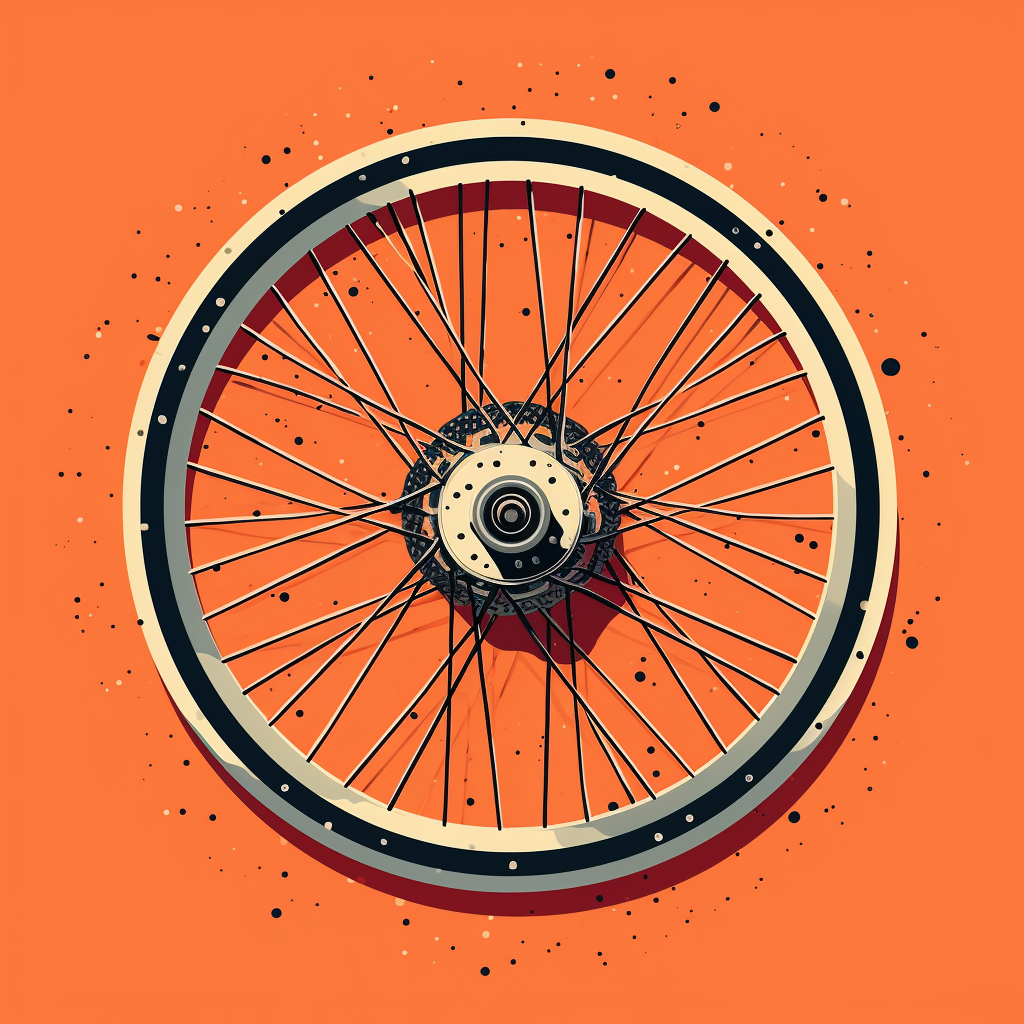
Bike Brake Parts:
- Brake levers: The brake levers are located on the handlebars and are used to activate the brakes.
- Brake cables: The brake cables connect the brake levers to the brake calipers.
- Brake calipers: The brake calipers are located on the frame of the bike and are responsible for applying the brakes to the wheels.
- Brake pads: The brake pads are located in the brake calipers and are what actually make contact with the wheels to slow down or stop the bike.
- Brake rotors: Brake rotors are only present on disc brakes. They are located on the wheels and are what the brake pads rub against to slow down or stop the bike.
Types of Brakes:
Disc Brakes 🚵♂️
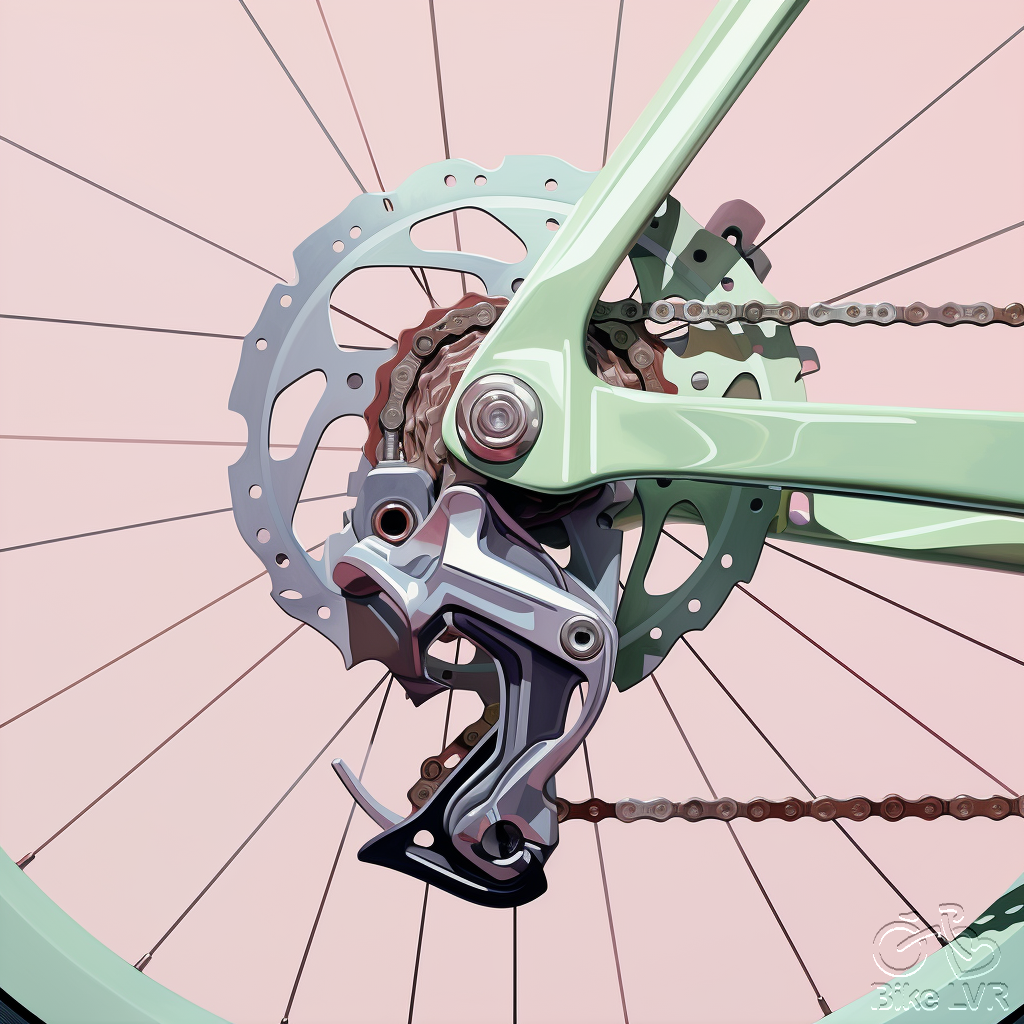
Disc brakes are a popular choice for many riders, as they offer superior stopping power compared to traditional rim brakes. They work by compressing a caliper against a rotor attached to the wheel hub, resulting in quick and powerful braking. Disc brakes are particularly useful for mountain bikers who need reliable stopping power on steep descents or in wet conditions. They also require less maintenance than rim brakes, making them a convenient and practical choice for commuters and daily riders. However, it’s important to note that disc brakes may not be compatible with all bikes, so it’s essential to check your bike’s compatibility. They tend to be more expensive than rim brakes.
Rim Brakes 🚲
Rim brakes are a popular type of brake system that operates by squeezing the rim of the wheel to create friction and slow down the bike. The caliper of the rim brake is mounted on a bridge between the two seat stays in case of rear brakes. The brake levers are mounted on the handlebars which allow riders to control their speed easily. In comparison to other types of brakes, rim brakes require maintenance and can be easily replaced if needed but use brake pads that can wear out.
Brake Levers
When it comes to controlling your bike, brake levers are an essential part of your setup. These levers, located on the handlebars, allow you to control the speed and direction of your bike with ease. Different types of brake levers exist for various riding styles and preferences. Some come equipped with adjustable reach features to ensure comfortable handling for all riders. Regular maintenance is vital in ensuring that they function correctly, which is particularly crucial when it comes to staying safe on the road or trail. So be sure to check them before every ride!
More on Brakes for Heavy Riders
Frequently Asked Questions:
What are the 5 Main parts of a bike?
The 5 main parts of a bike are:
- Frame: The frame is the main structural part of the bicycle. It is made of steel, carbon fiber, or aluminum. The frame holds the other parts of the bicycle together, including the wheels, handlebars, and saddle.
- Wheels: The wheels are what allow the bicycle to move. They are made of a rim, spokes, and hub. The rim is the outer part of the wheel that the tire is mounted on. The spokes connect the rim to the hub. The hub is the center of the wheel and it is where the axle is attached.
- Saddle: The saddle is where the rider sits. It is made of a cushioned seat and a metal or carbon fiber frame. The saddle is attached to the seat post, which is a metal tube that runs through the frame.
- Handlebars: The handlebars are what the rider uses to steer the bicycle. They are attached to the stem, which is a metal tube that is connected to the frame. The handlebars can be adjusted to different heights and angles to fit the rider’s comfort.
- Components: The components are the moving parts of the bicycle, such as the brakes, shifters, and derailleurs. They allow the rider to control the bicycle and change gears.
What are the key components of a bike drivetrain and how do they work together?
The key components of a bike drivetrain include the chain, cassette or freewheel, front and rear derailleur, and crankset. The chain transfers power from the pedals to the wheels via the cassette or freewheel, while the front and rear derailleur help shift the chain between gears on the cassette or freewheel. The crankset includes the pedals and chainrings, which work together with the chain to transfer power to the wheels.
This bike drivetrain optimizes power transfer and gear shifts for a smooth riding experience.
What is the front part of a bicycle called?
The bicycle’s front portion, known as the fork, is typically composed of metal or carbon fiber and is responsible for securing and facilitating the turning of the front wheel. Additionally, it plays a vital role in absorbing shocks and vibrations from the road. Forks are generally categorized into two main types: rigid forks, which lack suspension, and suspension forks, which incorporate various mechanisms, such as springs or shock absorbers, to enhance riding comfort.
Here are some of the parts of a fork:
- Crown: The crown is the top part of the fork that connects to the head tube.
- Steerer tube: The steerer tube is the long, thin tube that goes through the headset and connects to the handlebars.
- Blades: The blades are the two long, thin tubes that extend down from the crown.
- Fork ends: The fork ends are the parts of the blades that connect to the hub of the front wheel.
How can I choose the right size and type of bike handlebars for my needs?
To choose the right size and type of bike handlebars, consider your riding style and body measurements. Measure your shoulder width to determine the appropriate handlebar width for you.
There are different types of handlebars, including drop bars, flat bars, and riser bars, each with its own advantages. Consider the type of riding you’ll be doing (road, mountain, commuting) when selecting handlebars.
Ultimately, it’s important to choose a handlebar that feels comfortable and supports your riding style to ensure an enjoyable and safe biking experience. I prefer flat bars over drop bars but I mostly trail ride. Test handlebars out at your local bike shop.
What are essential safety features to look for in a bike, such as brakes and lights?
When looking for a bike, I prioritize safety features. The most important feature is reliable and responsive brakes. Look for bikes with good-quality brakes that you can rely on. I like Disc breaks over Rim breaks as the trail I ride on often has large puddles and I often have my daughter on the back so need the extra stopping power.
Bike lights are an essential accessory, especially when cycling in dimly lit areas. A bike equipped with built-in lights or an attachable light ensures visibility, supplemented by reflective strips on the front and back of the bike.
Finally, consider getting a bell or horn to alert pedestrians and other cyclists of your presence. All of these features and a helmet will keep you safe on your next ride.
What are the different types of bike frames and how do they affect the riding experience?
The three most common types of bike frames are aluminum, carbon fiber, and steel. Aluminum frames are popular for their lightweight, stiff, and responsive nature, but they can be less comfortable. Carbon fiber frames are also lightweight and offer a smoother ride, although they can be expensive. Steel frames provide comfort and durability, but they tend to be heavier than other materials. Each frame material affects the riding experience in its own way, so it is important to choose one that fits your riding style and preferences.
Need help on the different types of bikes > Bicycle types
